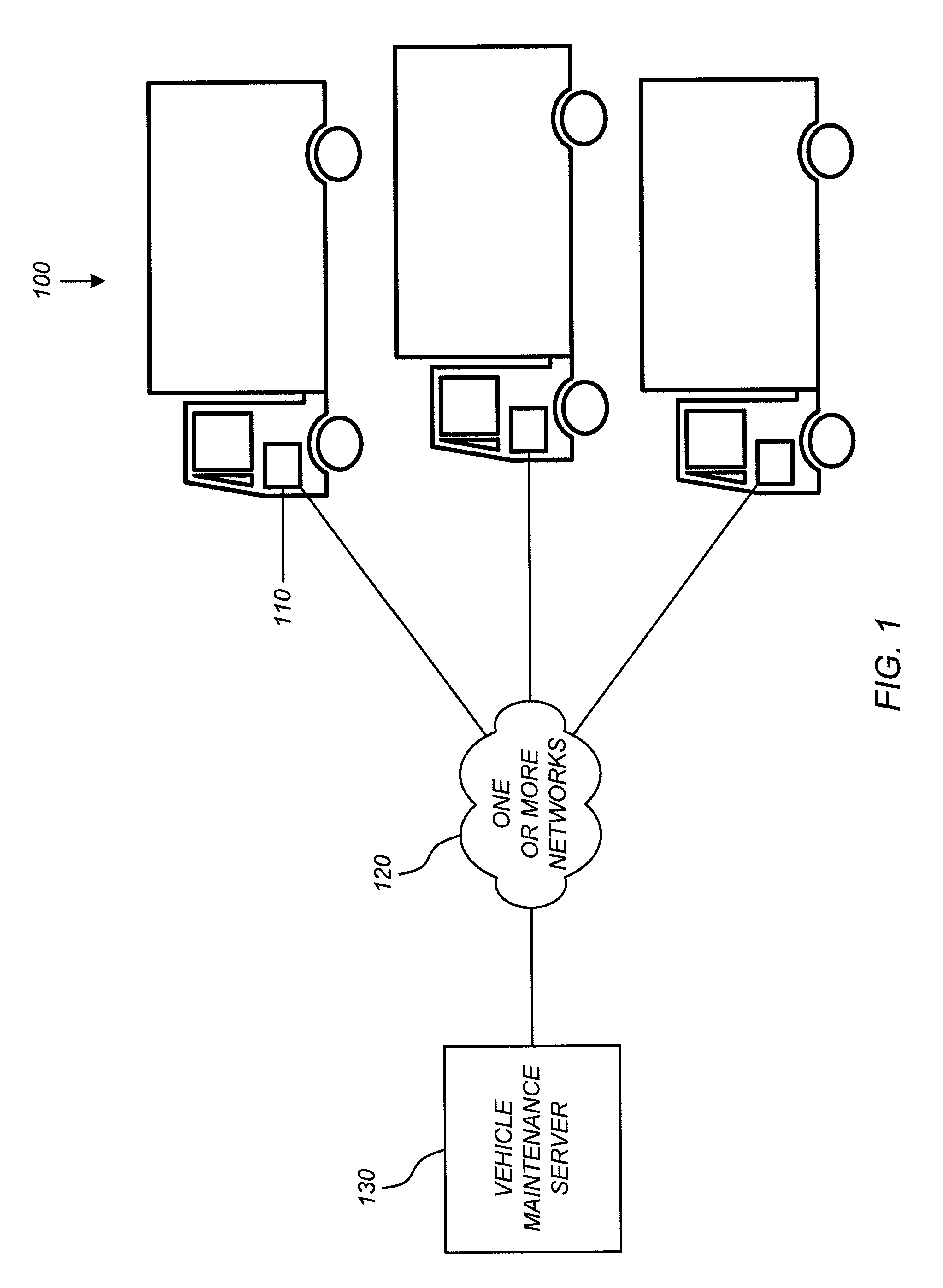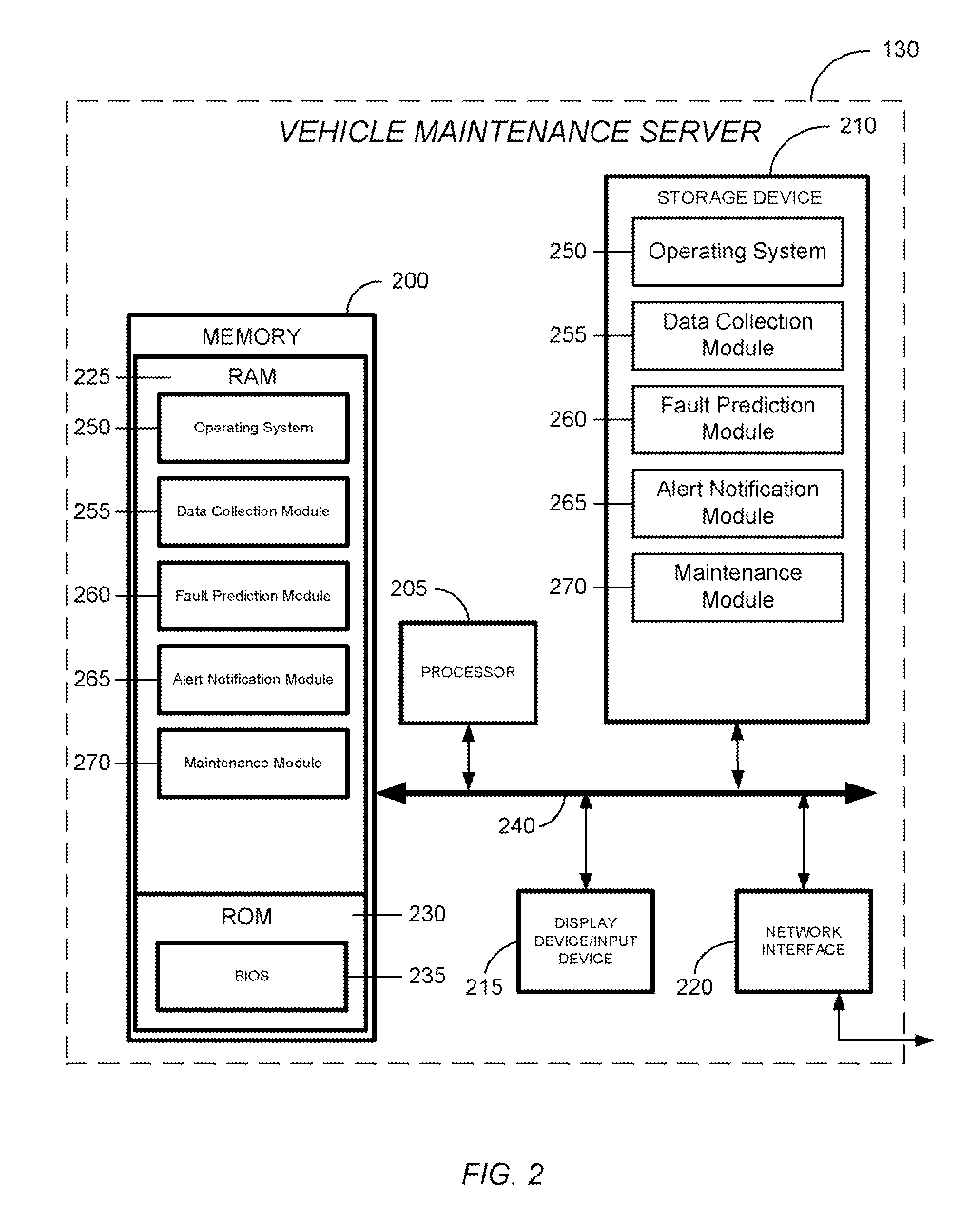Vehicle maintenance systems and methods
a technology for vehicle maintenance and systems, applied in the field of vehicle maintenance systems and methods, can solve the problems of excessive vehicle downtime, general reactive nature, and not generally taking into account the actual, so as to reduce vehicle downtime, reduce maintenance and repair costs, and reduce the number of vehicle breakdowns
- Summary
- Abstract
- Description
- Claims
- Application Information
AI Technical Summary
Benefits of technology
Problems solved by technology
Method used
Image
Examples
Embodiment Construction
[0022]Various embodiments of the present invention now will be described more fully hereinafter with reference to the accompanying drawings, in which some, but not all embodiments of the inventions are shown. Indeed, these inventions may be embodied in many different forms and should not be construed as limited to the embodiments set forth herein; rather, these embodiments are provided so that this disclosure will satisfy applicable legal requirements. Like numbers refer to like elements throughout.
Overview
[0023]Various embodiments of the invention generally relate to systems and methods related to the maintenance of vehicles. In certain embodiments, historical data measurements from at least one vehicle in a fleet of vehicles are analyzed to identify the underlying reasons for vehicle faults and breakdowns and to develop algorithms that identify conditions that tend to indicate when a vehicle may be about to experience a fault. In particular, to predict vehicle faults, a plurality ...
PUM
 Login to View More
Login to View More Abstract
Description
Claims
Application Information
 Login to View More
Login to View More - R&D
- Intellectual Property
- Life Sciences
- Materials
- Tech Scout
- Unparalleled Data Quality
- Higher Quality Content
- 60% Fewer Hallucinations
Browse by: Latest US Patents, China's latest patents, Technical Efficacy Thesaurus, Application Domain, Technology Topic, Popular Technical Reports.
© 2025 PatSnap. All rights reserved.Legal|Privacy policy|Modern Slavery Act Transparency Statement|Sitemap|About US| Contact US: help@patsnap.com



